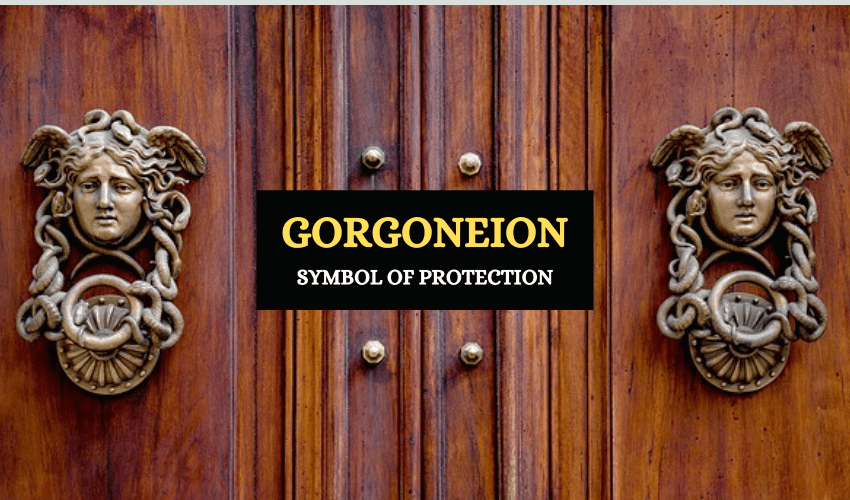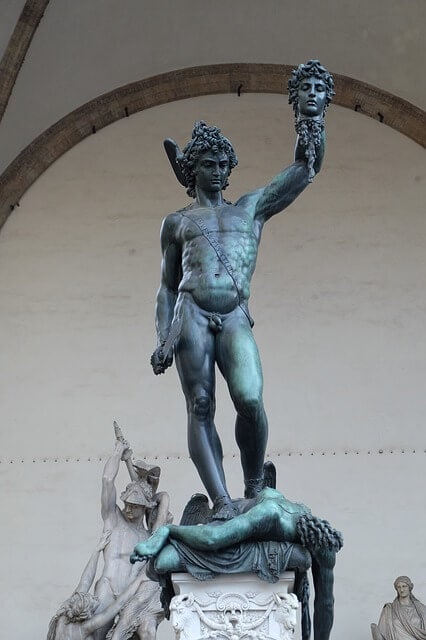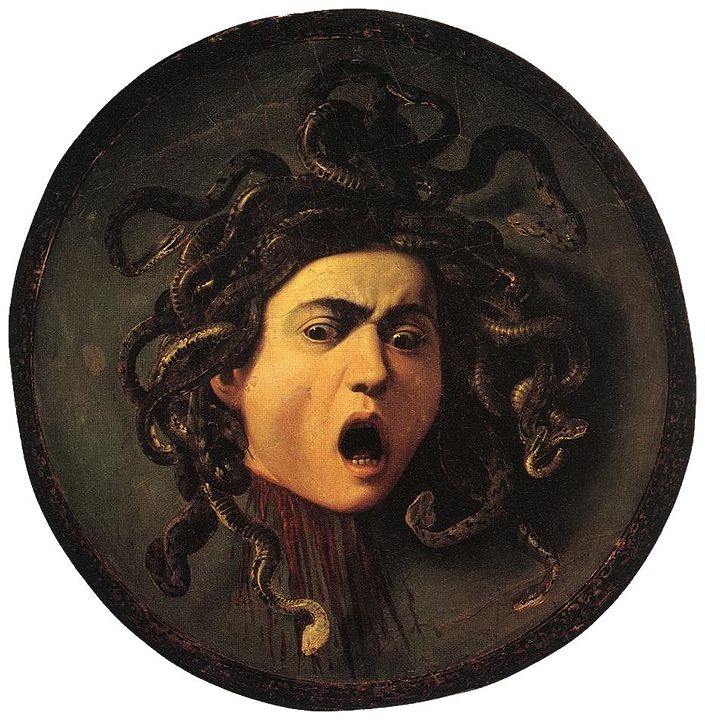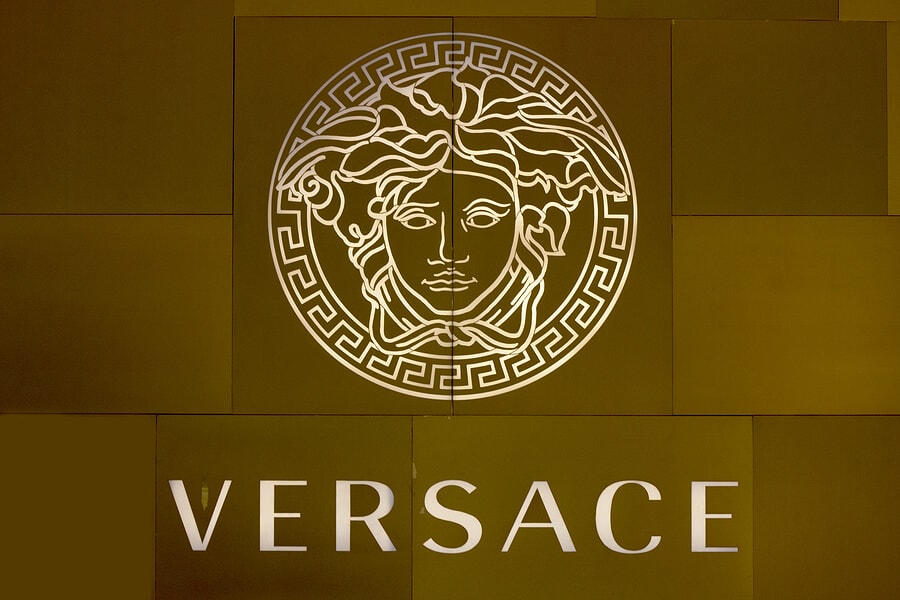
Table of Contents
The Gorgoneion is a protection symbol, featuring the head of a Gorgon, a mythical creature often portrayed in ancient literature. It was used to protect oneself from evil and harm back in Ancient Greece and is closely linked to the Olympian deities Athena, the goddess of war, and Zeus, the king of the Olympians. Let’s take a look at the symbolism behind the Gorgoneion and how it came into existence.
The Origin of the Gorgoneion

The Gorgoneion features the head of the Gorgon Medusa, whose tragic tale is well-known in Greek mythology.
Medusa was a Gorgon (in some versions she was a beautiful woman) who was cursed by the Greek goddess Athena for being raped by Poseidon in her temple. The curse turned her into a hideous monster, with snakes for hair and a stare that would instantly kill anyone who looked into her eyes.
Medusa was finally slain by the Greek hero Perseus, who beheaded her while she slept and gifted her severed head to Athena. Even when completely severed from her body, Medusa’s head continued to turn anyone who gazed upon it into stone.
Athena accepted the gift and placed it on her aegis (a goatskin shield). It’s said that the head protected Athena during many battles and even the supreme god Zeus wore the image of the Gorgon’s head on his breastplate. Athena and Zeus, along with several other major Olympian deities are hardly ever depicted without the Gorgoneion. In this way, Medusa’s head eventually morphed into a symbol of protection.
The History of the Gorgoneion as a Symbol

As a symbol, throughout the history of Ancient Greece, the Gorgoneion became an important symbol of protection against harm and evil energies.
Gorgoneia first made an appearance in ancient Greek art in the early part of the 8th century BC. A coin, dating back to this period, was found during an archaeological dig at the Greek city of Parium and more were discovered at Tiryns. The image of the Gorgon was found everywhere, on temples, statues, weapons, clothing, dishes, coins and armor.
When the Hellenic culture was absorbed by Rome, the popularity of the Gorgoneion increased dramatically. While the earliest images of the Gorgon’s head were ghastly, with bulging eyes, sharp teeth, gaping jaw and the tongue stretched out, it was gradually changed over time to a much more pleasant one. The serpent-hair became more stylized and the Gorgon was depicted with a beautiful face. However, some people believed that these new, abstract versions of the Gorgoneia had far less power than the earlier images.
The Use of Gorgoneion
Marija Gimbutas, a Lithuanian-American archaeologist, states that the Gorgoneion was an important amulet in the Mother Goddess cult, and was distinctly European. However, British scholar Jane Harrison contradicts this view, stating that there are several primitive cultures that use masks with the image of the Gorgon for their rituals, to scare people and discourage them from doing wrong.
Similar masks with the image of the Gorgoneion were used in the 6th century BC, known as lion masks. These were found in most Greek temples, especially those in or around the city of Corinth. In 500 BC, however, people stopped using Gorgoneia as decorations for monumental buildings but there were still images of the symbol on roof tiles used for smaller buildings.
The Gorgoneion was used to decorate all manner of things aside from buildings and roof tiles. As mentioned above, in the Mediterranean region, the image of the Gorgon could be found on practically everything including coins and floor tiles. Coins with the image of the Gorgon on them were being made in 37 different cities, which gave the character Medusa almost the same fame and popularity as some of the main Greek gods.
People put up images of Gorgons on buildings and objects as well. Gorgoneia were depicted next to the threshold of wealthy Roman households to protect the house from evil.
Symbolism of the Gorgoneion
The Gorgon’s head (or the head of Medusa) is a symbol of terror, death and divine magical power, in Greek mythology. In the myths, any mortal who set eyes upon it was immediately turned to stone.
However, it also became a symbol of protection and safety. Since it was popular among the Roman emperors and Hellenistic kings who often wore it on their person, the Gorgoneion became a symbol closely associated with royalty.
While some believe that this amulet may have its own true power, others believe that it’s power is entirely psychosomatic. This means its power could be generated by the beliefs and fears of those who face the Gorgoneion, in which case it would be of no use against someone who doesn’t fear the Gods or the Gorgons.
The Gorgoneion in Use Today

The image of the Gorgon remains in use even today, worn by those who still believe in its ability to protect them from evil. It’s also used by businesses and contemporary designers. The symbol is most popular as the logo for fashion house Versace.
A Point to Ponder
Medusa appears to be one of the most misunderstood, abused and exploited figures of Greek mythology. She was horribly wronged at several instances, and yet is often painted as a monster. The fact that her head was used as an apotropaic symbol is interesting.
- Cursed for a rape – Medusa was cursed by the goddess Athena for a rape which she actively tried to avoid. Instead of helping her, Athena was enraged that Medusa had ‘allowed’ the rape to occur in her pure temple. Because she couldn’t punish Poseidon, her uncle and the great god of the sea, she cursed Medusa.
- Hunted by men – Because of her curse, Medusa was actively hunted by heroes who all wanted to take her down for their own glory. Again, we see Medusa becoming a victim of a man when Perseus finally slays her and takes her head away.
- Exploited in death – Even in death, Medusa is exploited. In a cruel twist of fate, Athena accepts Medusa’s head as a protective emblem for her shield. Medusa is forced to serve the gods as a weapon against their enemies, even though none had been there for her when she needed to stave off her own enemies.
In Brief
The Gorgoneion continues to be recognized as an apotropaic symbol meant to ward off malign influence and evil. Over time, it’s associations with Medusa took a backseat and its power as a symbol was recognized. Today, it continues to play a part in modern culture.








